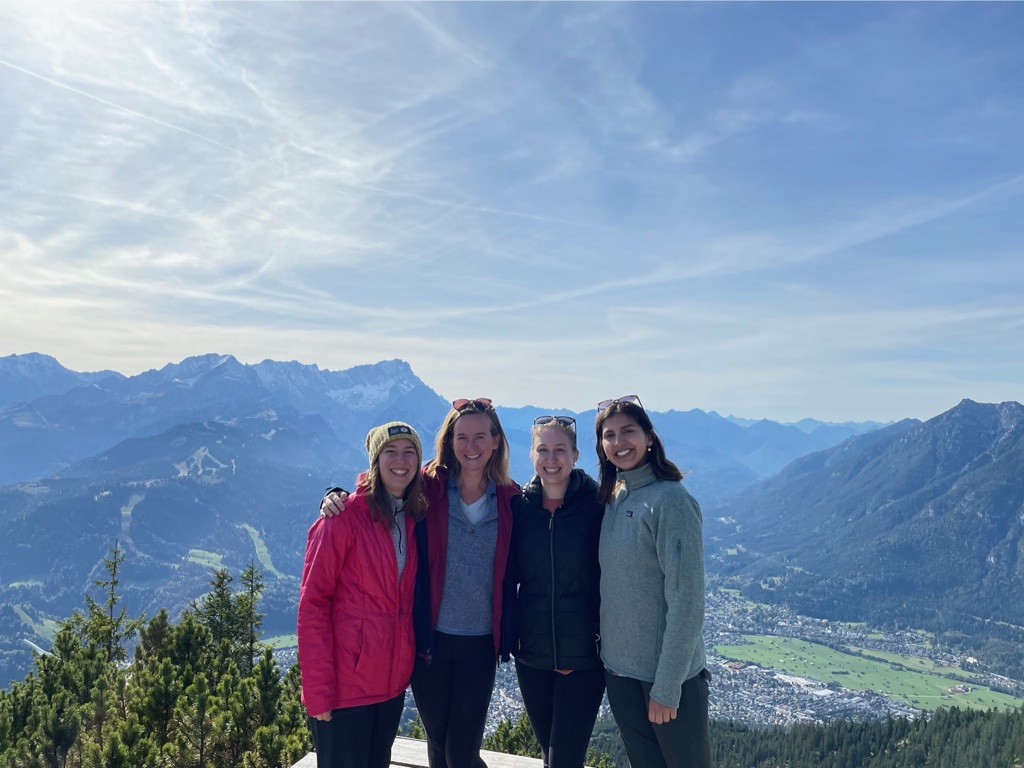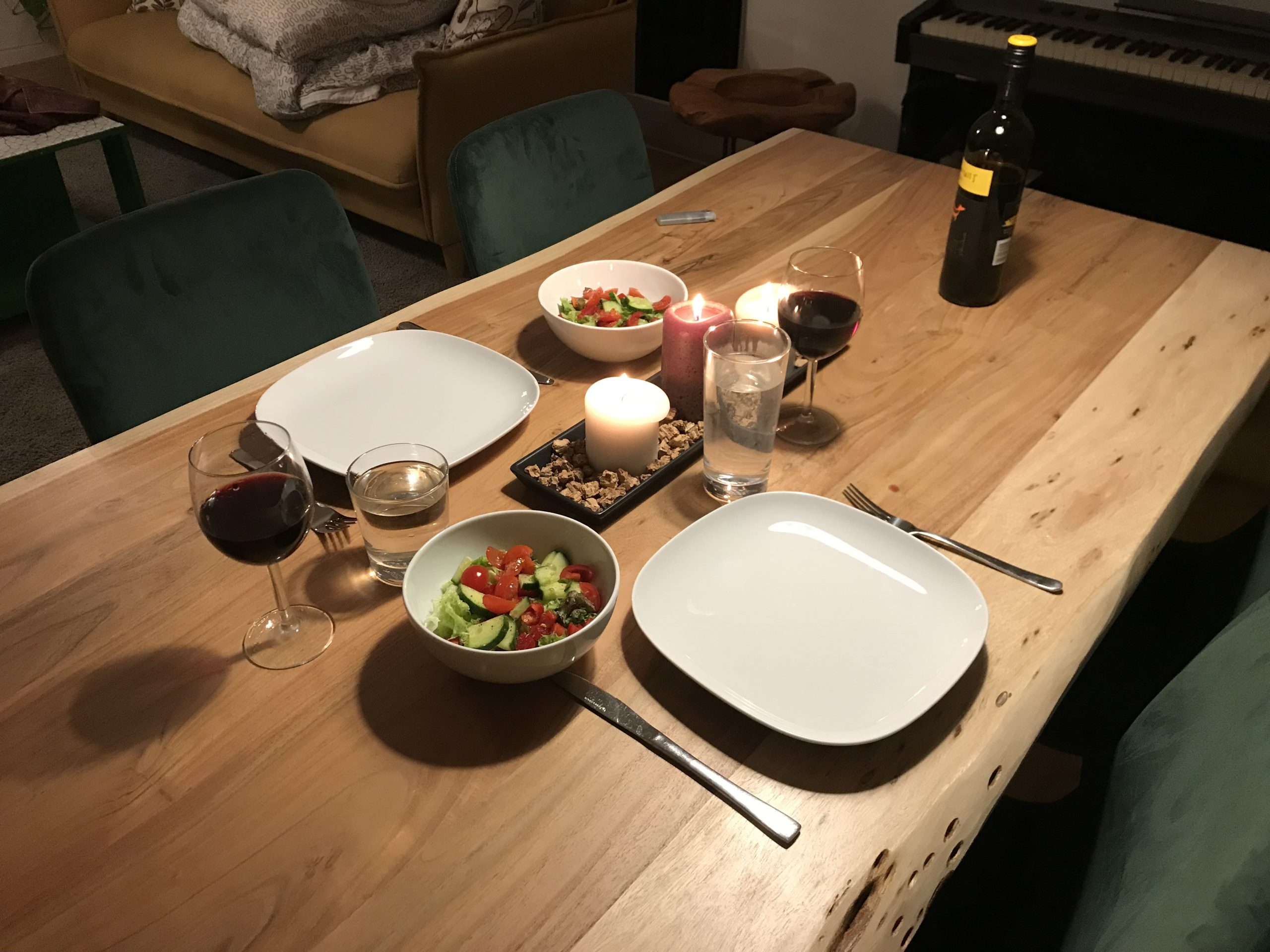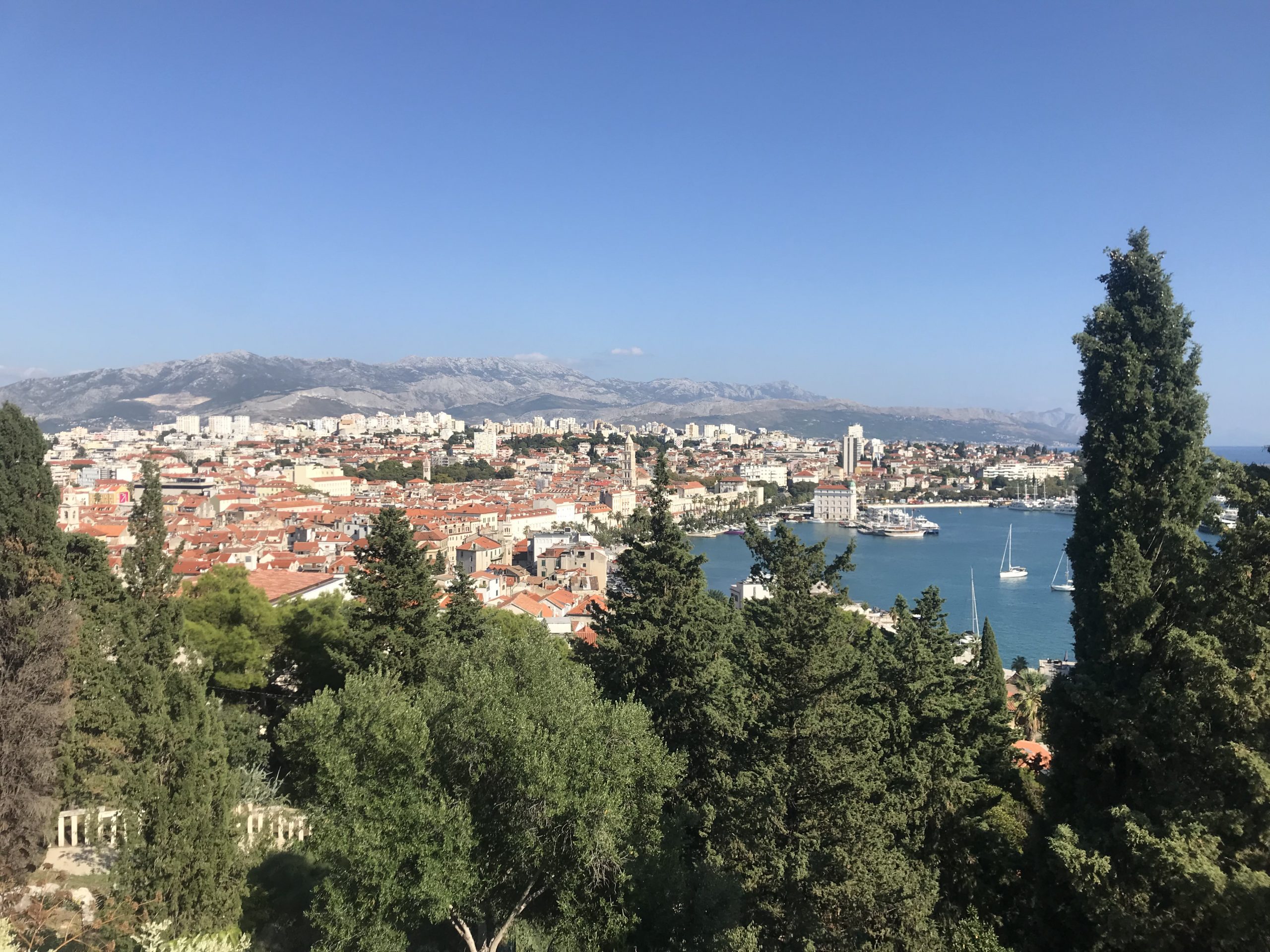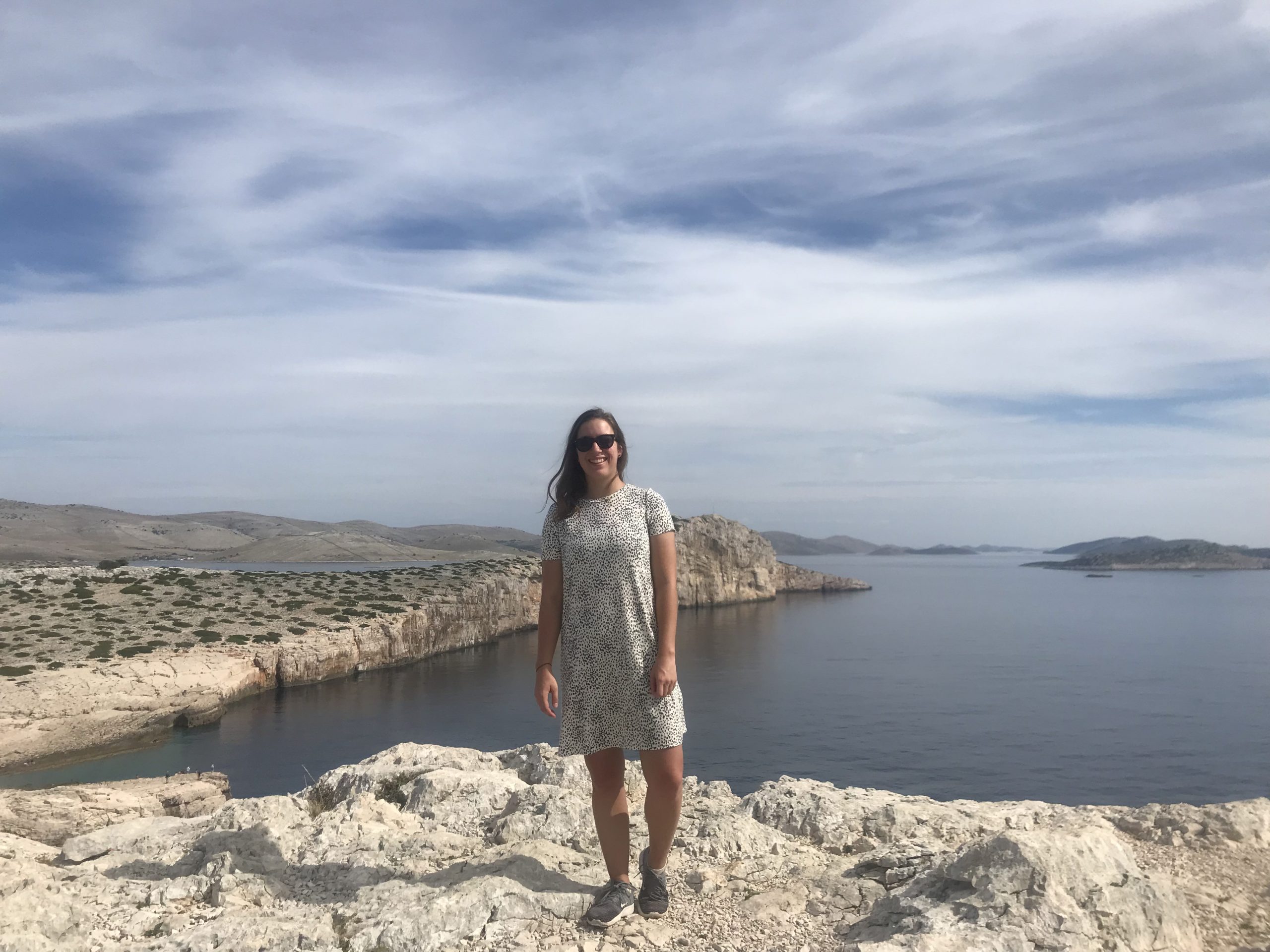
Seeing the courtroom where the Nürnberg Trials were held and learning about the minutia behind the post-war judiciary process was fascinating.

We increased our castle count by touring the Kaiserberg.

Normally tourists can climb the Sinwell Tower to get an incredible view of the city, but unfortunately the tower was closed due to Covid restrictions.

The view from the Kaiserberg is dominated by a sea of red.

I liked this unique street, squeezed between the Rathaus and St. Sebald.

The “Hauptmarkt,” or “main market,” and the Frauenkirche are in the heart of Nürnberg.

The interior of the Frauenkirche

The view from this bridge has a storybook quality.

Our hotel had a pretty spectacular rooftop pool with a view of the city's skyline.

This restaurant, where we ate Nürnberger Rostbratwurst for lunch, is tucked behind St. Sebald and was magically lit at night.

The ruins of the infamous Nürnberg Rally Grounds now are popular parklands. The Kongresshalle, this massive building, was never completed. The shell of the building now houses the museum documenting the Rallies and the Party Rally Grounds. The facade design was inspired by the Colosseum.

This central space in the Kongresshalle was intended to be roofed and the primary meeting space.

The Zeppelinfeld was a large field for marches of troops, and the huge stands were packed with supporters. This photo is taken from the grandstand. The green slopes in the background mark the perimeter stands which give a sense how big the field was.

The Zeppelinfeld’s grandstand, partially deconstructed by the US military and missing some original design elements like a colonnade and swastika, was designed based on the Pergamon Altar, which is housed in Berlin’s Pergamon Museum.

While none of the buildings planned for the Party Rally Grounds were designed by the architect I am researching since they came later in the Nazi reign, I’m still fascinated by the large architectural complex that was planned here. Seeing the massive ruins of the structures that were at least partially built made me marvel at the size of the entire planned complex.

Just in the shadow of Kaiserberg, Nürnberg’s Castle, the Albrecht Dürer Haus appealed to my nostalgia for high school German assignments.
Thursday morning started early as we caught a train to Nürnberg. After arriving and dropping our stuff off at the hotel, we made our way to Nürnberg’s Justice Palace, where there is a museum dedicated to the Nuremberg Trials. In addition to learning about the development and inception of the judiciary process that is still used today to try war criminals, we got to see the court room that housed the infamous Nazi trials after World War II.
We then had a traditional Nürnberger Rostbratwurst lunch. These sausages are smaller, approximately finger sized, and are grilled over a beech wood fire and served with either sauerkraut or potato salad. Much like the Weißwurst, the Nürnberger Rostbratwurst also has a mythical origin, which you can read more about here. In the afternoon we toured the imperial castle that sits on a hill overlooking the city. In the evening my parents entertained me by taking a break from German food and eating sushi instead.
On Friday we went to the Documentation Center for the Third Reich’s Party Grounds. In the 1930s the Nazi Party hosted annual rallies in Nürnberg and built massive facilities to accommodate the huge crowds and display their power. The Party had plans for further expansion that were never fully realized, but the ruins of the structures that were either fully or partially built still stand today.
After making a pitstop for a Bavarian lunch, we went to the Albrecht Dürer Haus, a museum in the house of the famous German Renaissance artist. I felt particularly compelled to visit because in one of my high school German classes, we translated his biography. We turned in early for the night in order to catch our train to Heidelberg the next morning.






















Leave A Comment